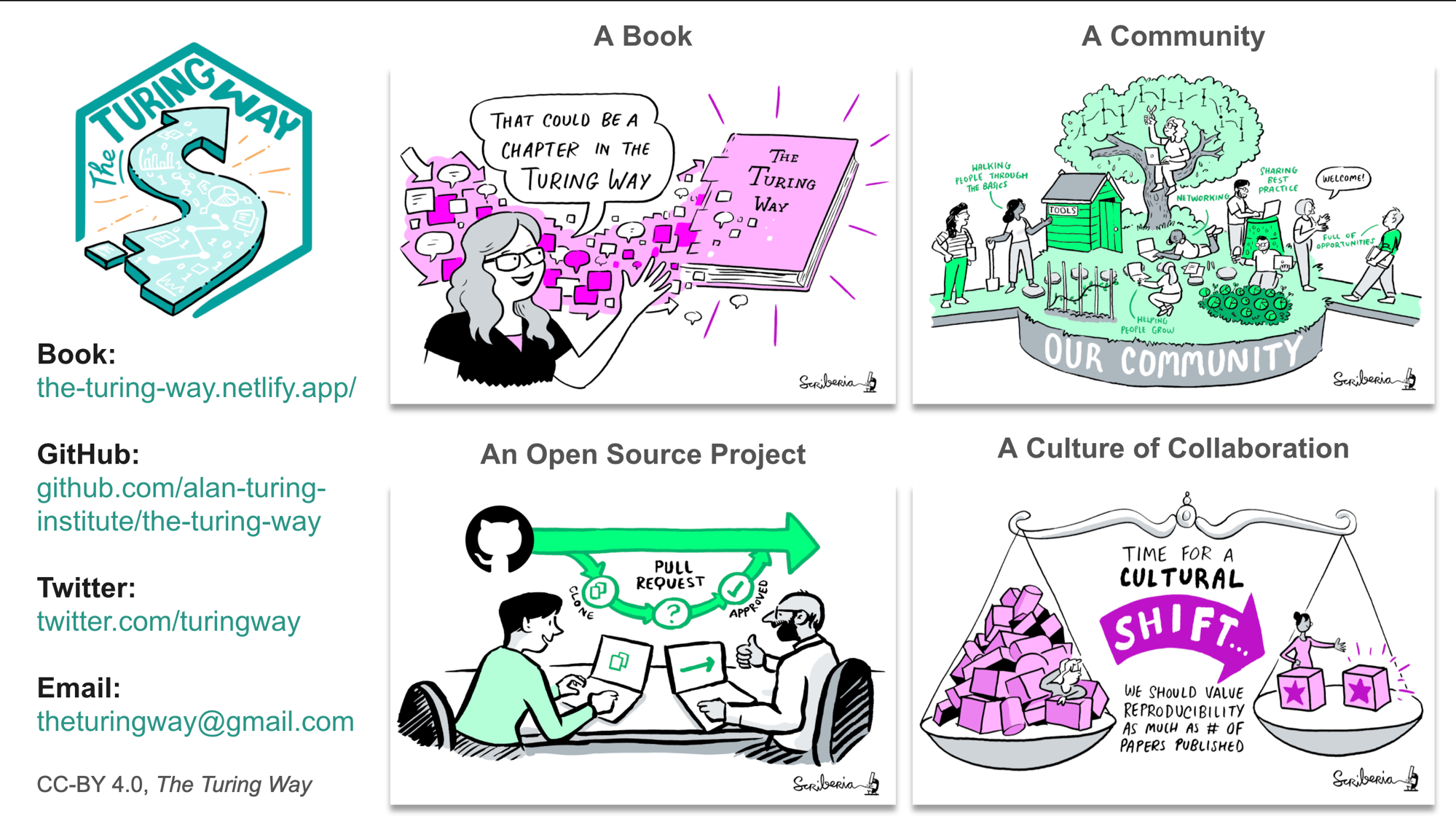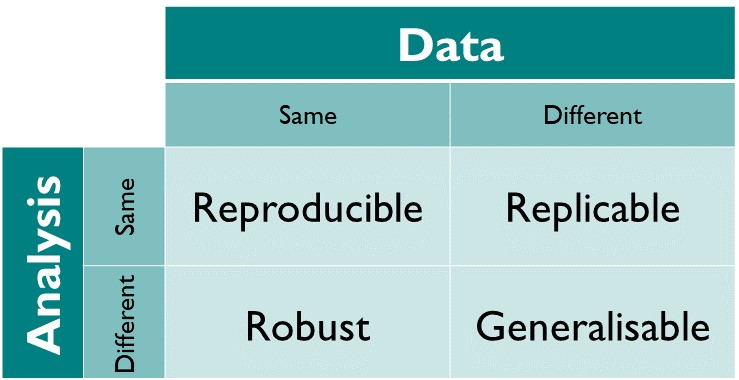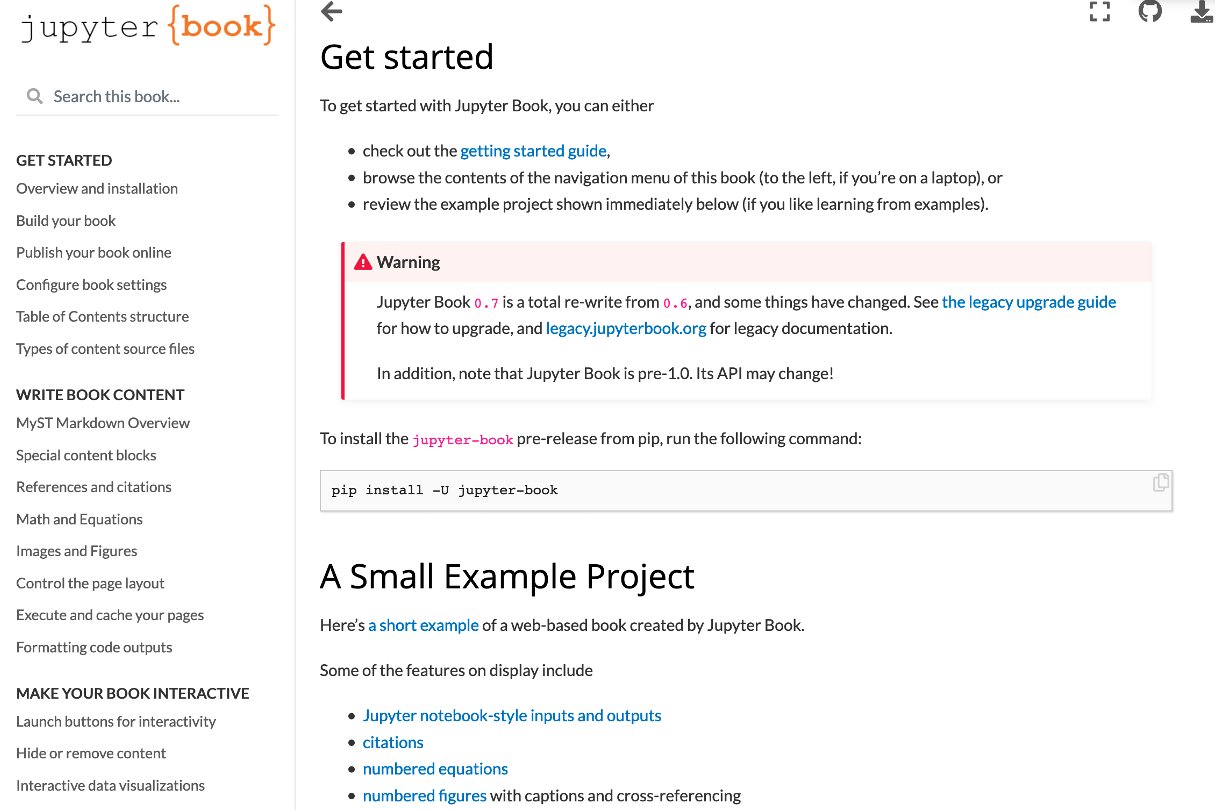Introduction
Overview
Teaching: 30 min
Exercises: 15 minQuestions
What are The Turing Way and Jupyter Book projects?
Objectives
Explain what The Turing Way project is and how it allows people to exchange computational skills and best practices for reproducible research
Explain what the Jupyter Book project is and how it allows collaborative development of an online book
Demonstrate of The Turing Way GitHub repository and show how its Jupyter Book looks like online

Figures 1: One image description of The Turing Way
The Turing Way
📹 Overview video: The Turing Way
- A book:
- An open source project:
- A community:
- Divrse researchers come together to collaborate and develop The Turing Way materials online via GitHub (see Contributors Table)
- A culture of collaboration:
The Turing Way is an Open Source collaborative project that involves and supports its members of diverse skills and backgrounds to ensure that data science is accessible and useful for everyone. Its moonshot goal is to make reproducible research ‘too easy not to do’.
Reproducibility
At The Turing Way we define reproducible research as work that can be independently recreated from the same data and the same code that the original team used. Reproducible is distinct from replicable, robust and generalisable as described in the figure below.

Figures 2: A result is reproducible when the same analysis steps performed on the same dataset consistently produces the same answer.
Community members sharing best practices for reproducible research
The Turing Way is a community-led book project that involves diverse perspectives of researchers, funders, educators, learners and various stakeholders from around the world.
Our goal is to provide a platform where these members can come together to share skills and resources that data scientists in academia, industry, government and other sectors need at the start of their projects to ensure that their projects are easy to reproduce and reuse at the end.
The book started as a guide for reproducibility, covering technical methods such as version control, testing, and continuous integration. However, technical skills constitute only one aspect of reproducible research. In February 2020, The Turing Way expanded to a series of guides covering topics on reproducible research, project design, communication, collaboration, and ethical research.
To date, there are 100 subchapters, collaboratively written by over 175 contributors and read by hundreds of researchers worldwide.
References:
JupyterBook
📹 VIDEO
Jupyter Book is an open source project for building beautiful, publication-quality books and documents from computational material.
Jupyter Book provides the following features for creating online books:
Publication-quality content in markdown files
- Files can be written in Markdown syntax
- Jupyter Book also proves an extended flavor of markdown with publishing features that allows citations and cross-references, math and equations, and figures that can be resized.
Interactive and executable codes in Jupyter Notebooks
- Chapters can be written in Jupyter Notebooks, which can include code that can be executed while building the book, outputs for which can be displayed in-line in your book.
- The Jupyter visualisation can allow readers to interact with the file content.
Navigable and collaborative workflow
- Jupyter Books are easy to navigate (see demo in the section).
- The GitHub configuration allows readers to collaborate easily by suggeting edits and reporting bugs.

Figure 3: Jupyter Book offers a detailed guide for creating different types of book contents
The guide for using Jupyter Book is written in online Jupyter Book: https://jupyterbook.org/intro.html. It provides guidelines with example projects that one can play with to create a different types of book content and test its features.
References
Project Demos
Setting to explore the Jupyter Book of The Turing Way
Jupyter Book is used for creating the online book of The Turing Way. Please use this link to follow the book demo: https://the-turing-way.netlify.app/welcome In this demo we show you the following aspects of online book of The Turing Way:
5 guides in The Turing Way
The Turing Way Community Handbook
The Turing Way Community Handbook aims to provide information about the project, ways of working, and other aspects that can make community participation equitable for our members.
Navigable and collaborative features of Jupyter Book

Figure 4: Jupyter Book feature makes _The Turing Way_ navigable and collaborative.
Users of Jupyter Book can not only read the chapters online, but can easily navigate its file and collaborate in the project.
- As shown in the Figure 4, Jupyter Book creates a table of content for the book in the left (Figure 4.1) and table of content for the chapter for the chapter on the right (Figure 4.5), making the book and chapter contents easy to navigate.
- The book has been configured to allow a reader to read the book in the fullscreen mode (Figure 4.2).
- The collaborative workflow has been explained in the Module-7 of this tutorial.
The Turing Way GitHub repository
We welcome all contributions to this project via issues and pull requests on outr online GitHub repository. We have a contributors guideline that allows our contributors to make sure that their contributions can be easily integrated into the projects.
Important components for building Jupyter Book of The Turing Way
All the content of the book is stored in the
book/websitefolder. Please take a moment to check out these files - you don’t need to read them all, but take note of where they are and what their format is:
- Chapters contents written in
Markdown- The
_toc.yml fileto structure the book by defining the table of content- A directory to store all the figures (
figures)- A bibtex file to store all the references (
references.bib)- The
_config.ymlfile for configuring the book
In the later modules, we will learn about creating a Jupyter Book from scratch using these important components of the book.
We will also see how one can cite an external resources through references.bib file and cross reference chapters within the JupyterBook.
Key Points
The Turing Way is an open source and collaborative project for reproducible research that provides a common platform for different stakeholders of research to come together and exchange skills around reproducible, ethical, collaborative and inclusive research
Jupyter Book is an open source projects that can be used for creating interactive computational or non-computational resources to share and develop them online
The Turing Way uses Jupyter Book for creating and sharing its materials by involving its community members online
Contents of The Turing Way are collaboratively developed by contributors on project’s GitHub repository
There are a few important components (files) that are needed to build a The Turing Way Jupyter Book: chapters written in Markdown files,
figuresfolder where all the images used in the book are used, areferences.bibfile where all the referenced materials are stored in bibtex format, a_toc.ymlfile that allows how to structure our chapters online and abookfolder where all these components of the book are stored.